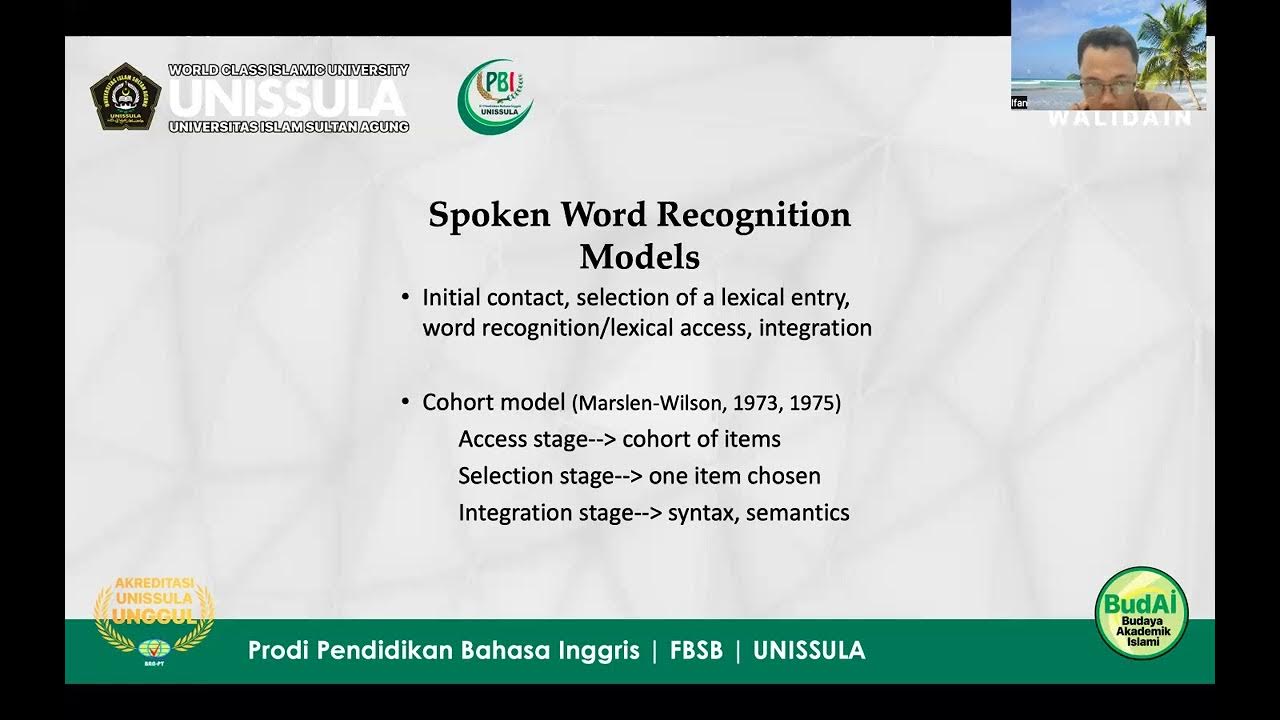Minicurso - Como se aprende uma língua estrangeira - aula 1
Summary
TLDRThis video introduces a minicourse on learning foreign languages, distinguishing between theories of language acquisition and teaching methods. The speaker discusses how various psychological theories, such as associationism, behaviorism, cognitivism, and interactionism, have influenced language teaching methods. Emphasizing the importance of understanding these theories, the speaker explores how each theory offers insights into how we learn languages, including associations, observable behaviors, cognitive processes, and social interactions. The session highlights that while these theories shape teaching methods, they are distinct from the methods themselves, which are guided by broader theoretical frameworks.
Takeaways
- 😀 Theory and method are distinct but interconnected concepts in language teaching and learning.
- 😀 A theory is a scientific set of ideas explaining a phenomenon, while a method is a set of procedures based on theories.
- 😀 Different psychological theories have influenced methods of language teaching, such as associativism, behaviorism, cognitivism, and sociointeractionism.
- 😀 Associativism suggests that learning occurs through the association of words with images or experiences.
- 😀 Behaviorism, as proposed by Skinner, views language learning as the acquisition of behaviors through repetition and reinforcement.
- 😀 Cognitivism focuses on internal mental processes, such as motivation and beliefs, in explaining language learning.
- 😀 Sociointeractionism, developed by Vygotsky, emphasizes the importance of social interactions and practices in language acquisition.
- 😀 Theories of language learning are not exclusive to foreign language acquisition but are general theories about how learning occurs.
- 😀 Theories inform teaching methods, but methods are not the same as the theories themselves.
- 😀 Integrating insights from various theories can enrich the process of teaching and learning foreign languages.
- 😀 Understanding different psychological approaches allows educators to tailor their teaching methods more effectively based on how learners acquire language.
Q & A
What is the difference between theory and method in language learning?
-A theory in language learning consists of a set of ideas or hypotheses that explain a phenomenon, while a method is a set of procedures or actions based on theories. A method guides how a language is taught, while a theory helps us understand how language is learned.
What are the four psychological theories that supported language teaching methods?
-The four psychological theories that supported language teaching methods are associationism, behaviorism, cognitivism, and interactionism (or socio-interactionism).
How does associationism explain language learning?
-Associationism suggests that learning occurs through mental associations, where words are connected to images or experiences. For language learning, this means associating a word with its meaning or visual representation.
What role does behaviorism play in language learning?
-Behaviorism, as developed by B.F. Skinner, sees learning as the acquisition of behaviors through repetitive responses and reinforcement. In language learning, this means that learners acquire language through mechanical repetition and reinforcement of correct usage.
How does cognitivism differ from behaviorism in explaining language learning?
-Cognitivism focuses on internal mental processes, such as beliefs and motivations, which influence learning. Unlike behaviorism, which emphasizes observable behavior, cognitivism views language learning as a process involving deep mental engagement and cognitive structures.
What is the impact of interactionism or socio-interactionism on language learning?
-Interactionism, particularly as theorized by Vygotsky, emphasizes that language learning occurs through social interaction. It suggests that learners acquire language by engaging in social practices and using language in communicative contexts.
Why is it important to understand that theories are not methods of teaching?
-Understanding the distinction is crucial because theories provide the scientific basis for understanding how language is learned, but they do not prescribe specific actions or steps for teaching. Methods are built from theories but are separate in terms of implementation in classrooms.
Can all four theories contribute to language learning?
-Yes, each theory has something valuable to offer. Associationism helps with associating words and images, behaviorism aids in habit formation, cognitivism highlights the importance of internal cognitive processes, and interactionism stresses the role of social interaction in learning.
What is the role of social practices in language learning according to Vygotsky's theory?
-Vygotsky's socio-interactionism theory emphasizes that language is learned through social practices. Learners acquire language by interacting with others in meaningful ways, which helps them understand not only the language itself but also how to use it appropriately in different social contexts.
How can teachers apply the theories discussed in the classroom?
-Teachers can apply these theories by using various strategies. For example, associationism can be applied by linking vocabulary with images, behaviorism through repetition and reinforcement, cognitivism by focusing on learners' cognitive processes and motivations, and interactionism by encouraging students to engage in meaningful conversations and social interaction.
Outlines

Esta sección está disponible solo para usuarios con suscripción. Por favor, mejora tu plan para acceder a esta parte.
Mejorar ahoraMindmap

Esta sección está disponible solo para usuarios con suscripción. Por favor, mejora tu plan para acceder a esta parte.
Mejorar ahoraKeywords

Esta sección está disponible solo para usuarios con suscripción. Por favor, mejora tu plan para acceder a esta parte.
Mejorar ahoraHighlights

Esta sección está disponible solo para usuarios con suscripción. Por favor, mejora tu plan para acceder a esta parte.
Mejorar ahoraTranscripts

Esta sección está disponible solo para usuarios con suscripción. Por favor, mejora tu plan para acceder a esta parte.
Mejorar ahoraVer Más Videos Relacionados

Second language acquisition theories

Language Learning vs Language Acquisition: Difference and Implications

Stephen Krashen on Language Acquisition Part 1 of 2

Stephen Krashen and Language Acquisition

Teaching literature in the language classroom: a historical overview

TEAL_2 Understanding Language Acquisition
5.0 / 5 (0 votes)
